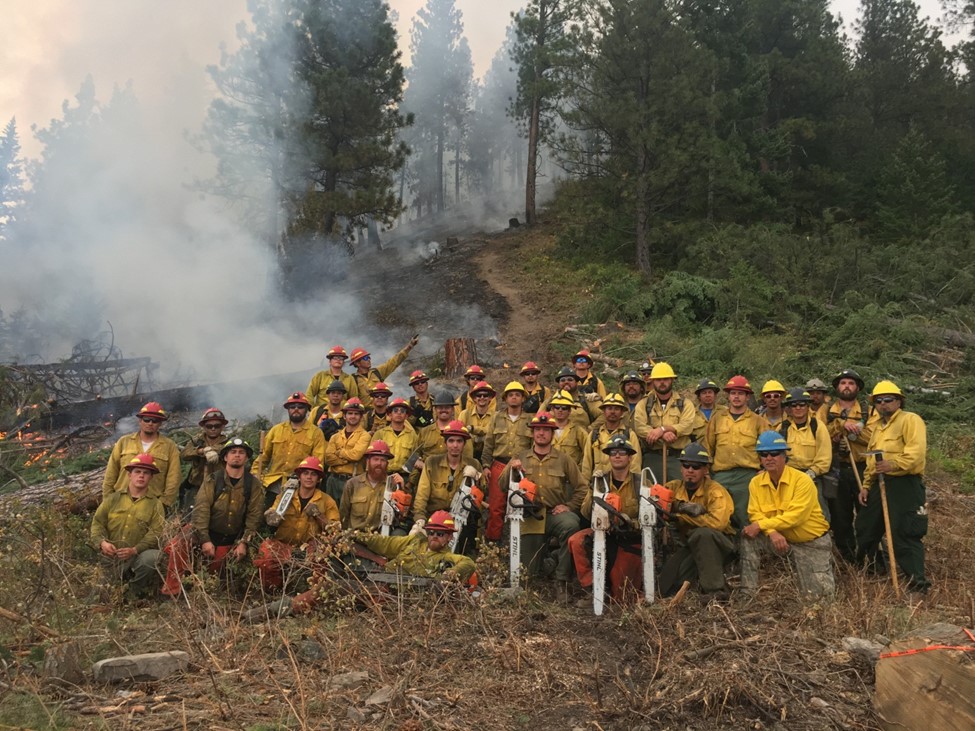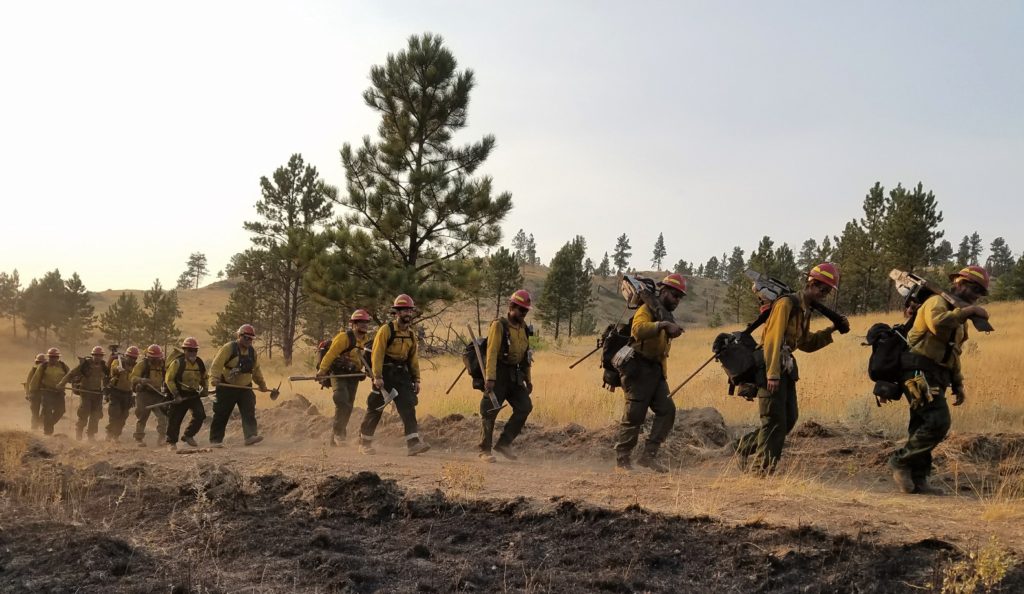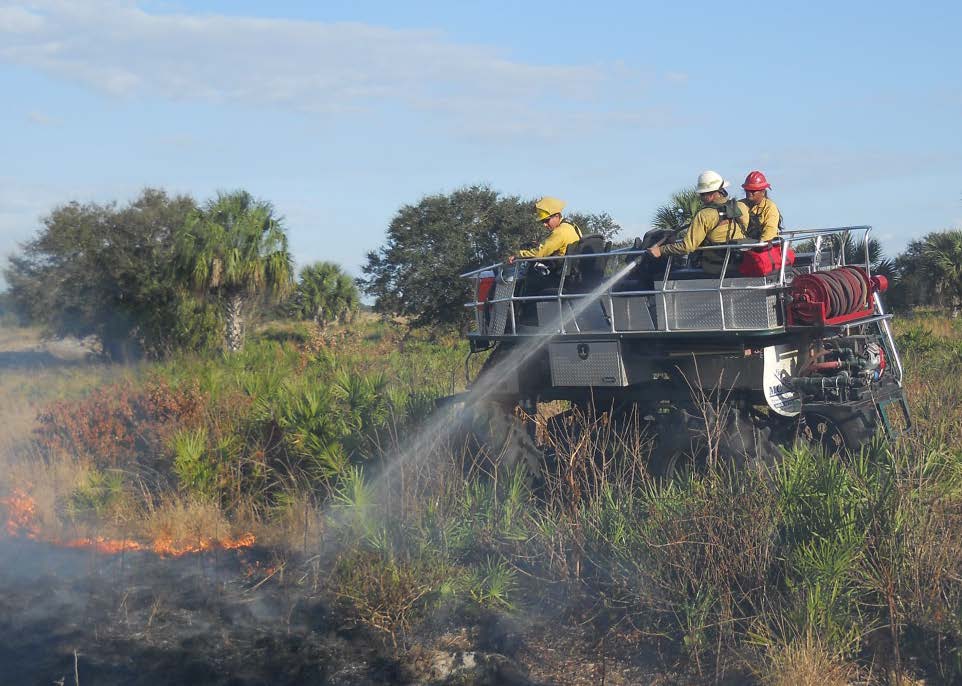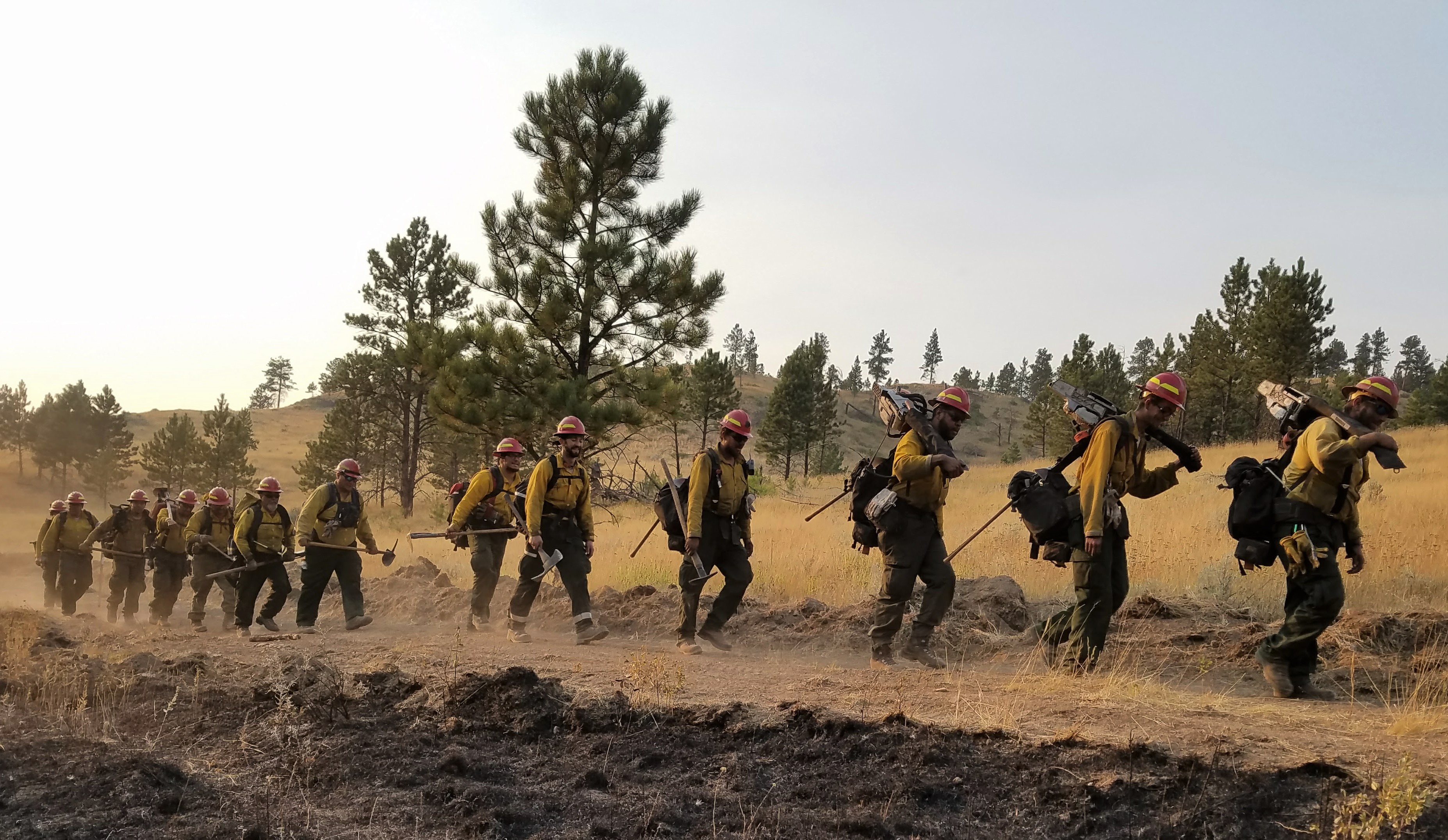
Overview
The Bureau of Indian Affairs is a formidable organization in the world of wildland fire. Known for consistently fielding strong crews year over year, the BIA is an integral part of our nation's wildland fire management system. The BIA has been actively involved in managing its natural resources for over a century. In 1910, just five years after the creation of the US Forest Service, the BIA created the Division of Forestry to protect and manage tribal lands. Over time, fire crews have helped protect the tribe's timber holdings, and ensure the land is properly managed for both commercial and recreational uses. Presently, the Branch of Wildland Fire Management oversees all fire operations on Indian Lands. Unlike other federal agencies, the BIA's relationship to the land is different, as noted here:
To fulfill BIA’s mission, we acknowledge Indian Country lands are not public property. The land is the source of a tribe’s spiritual, cultural, emotional and economical sustenance which they and their future generations depend upon for their survival.
As of 2019, 89 tribes have active wildland fire management programs. The BIA provides direct program management support to approximately 2/3 of those units, while the remaining 1/3 of the units direct their own programs with financial funding provided by the BIA.
Despite having relatively smaller land holdings (as compared to the BLM or FS), the BIA sees a lot of fires on its land as the charts below indicate. So there are certainly opportunities available to fight some fire.
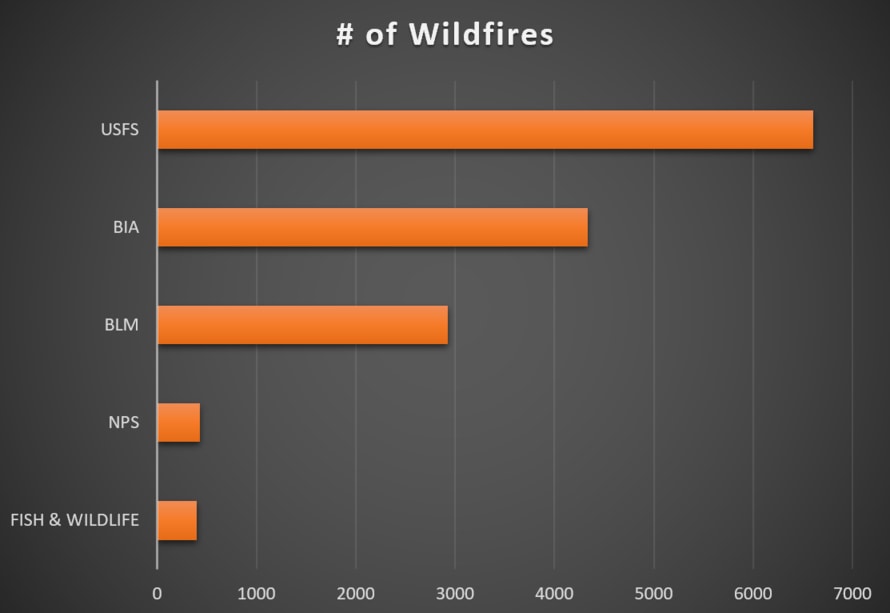
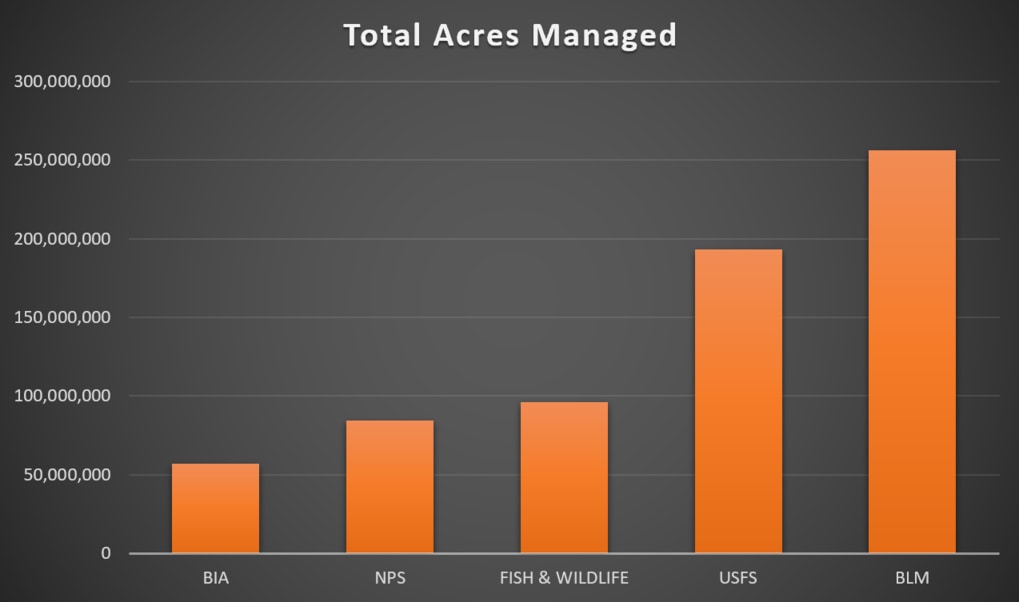
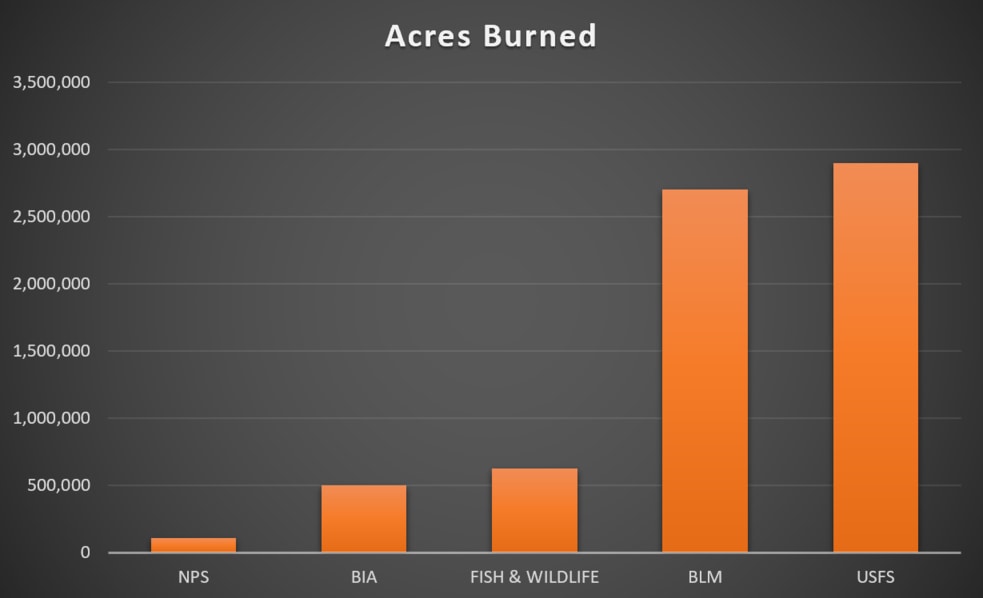
By the Numbers
Resource |
BIA |
| Engines | 205 |
| Helicopters | 9 |
| Planes | |
| Single Engine Air Tankers (SEATs) | 8 |
| Super Scoopers (CL215s) | 2 |
| Firefighters | 1,100 |
| Type 2 IA Crews | 3 |
| IHC Crews | 7 |
| Wildland Fire Modules | 1* |
| (*unclear about current BIA WFM status) |
source: BIA Wildfire Overview PDF , BIA Wildland Fire Facts-at-a-Glance

Based on publicly available information on the BIA's resources, we can make some assumptions about where the opportunities are to work for the BIA. The chart above assumes the following:
- Aviation Crews = 10 people per crew
- Engine Crews = 4 people per crew
- Hotshot Crews = 20 people per crew
- Type 2 Crews = 20 people per crew
Entry-Level Opportunities
Type 2 IA Hand Crews
The BIA has 3 Type 2 IA hand crews. In order to remain compliant with the NWCG standards, 60% of the crew must have at least 1 year of fire experience. Which means that each year, each crew can hire, at most, 8 rookies. So there are technically 24 rookie spots available on the three Type 2 IA crews every year. However, that doesn't mean that they will hire 24 rookies with no fire experience. They might only hire five or ten. It all depends on the applicant pool. But, regardless of the pool, they can only hire up to 24 people without fire experience.
Hotshot Crews
The BIA has 7 hotshot crews. In order to remain compliant with NWCG standards, 80% of the crew must have at least 1 year of fire experience. Which means that each year, each crew can hire, at most, 4 rookies. So there are technically 28 rookie spots available across the 7 BIA Hotshot crews each year.
Engine Crews
With 205 engines in the BIA's fleet, this presents the best area for an entry-level firefighter to break in. Now, it's a bit tough to determine precisely how many people are employed year over year on these engines because, depending on the type of engine, staffing levels might vary. For instance, a Type 3 Engine (the largest wildland fire engine) might have 5-7 firefighters assigned to it, while a smaller rig, like a Type 6 engine, might only have 4 or 5 firefighters assigned to it. Also included in this might be patrol rigs or prevention rigs, which might only be staffed by 1 or 2 firefighters. That being said, 820 is our best estimation based on the information available to us. Assuming that each engine could hire 1 - 2 rookies per year, you're looking at somewhere between 205 and 410 entry-level opportunities.
By the numbers alone, your best chance to get on with the BIA for the fire season will be on an engine crew. There are simply more spots available than anywhere else.
Wildland Fire Modules
Of the 48 active wildland fire modules, only 1 of those modules is BIA. The Warm Springs Wildland Fire Module. Every season, they will have between 7-10 crew members. Depending on the year, between 4-7 of those roles could be designated for entry-level crew member. And while there is not a specific requirement that crew members have previous fire experience, per NWCG guidelines on WFMs, it would be fair to assume that Warm Springs would limit their hiring of rookies to 1 or 2 per crew per season.
*NOTE: There's conflicting information re: Warm Springs. They're listed by the NWCG as a WFM, but there's also a Hotshot Crew by that name as well.
Aviation Crews
No entry-level positions are available on a helitack crew. All helitack crews require at least one year of fire experience.
Hotshot Crews
Helitack Crews
- Seminole Helitack
- Red Lake Helitack
- Crow Helitack
- Mescalero Helitack
- Ute Mountain Helitack
- Ft. Washakie Helitack
- Fort Apache Helitack
- Navajo Helitack
- Confederated Salish and Kootenai Tribes - Helitack KSKT Helitack Base
Type II Initial Attack Handcrews
- Bay Mills Crew
- Mission Valley Crew
- Signal Peak Crew
Aviation Resources
- 9 helicopters
- 8 SEATs (Single Engine Air Tankers)
- 2 CL215s (Super Scoopers)
- 1 Air Attack Platform
Resources:
- Search for jobs on USA JOBS
- Visit the BIA Career Site
- Learn more about Indian Preference
- Learn more about BIA's Type II Initial Attack / Training Crews
- Form BIA- 4432 (In order to claim Indian Preference, this form must be completed and attached to each job application)
